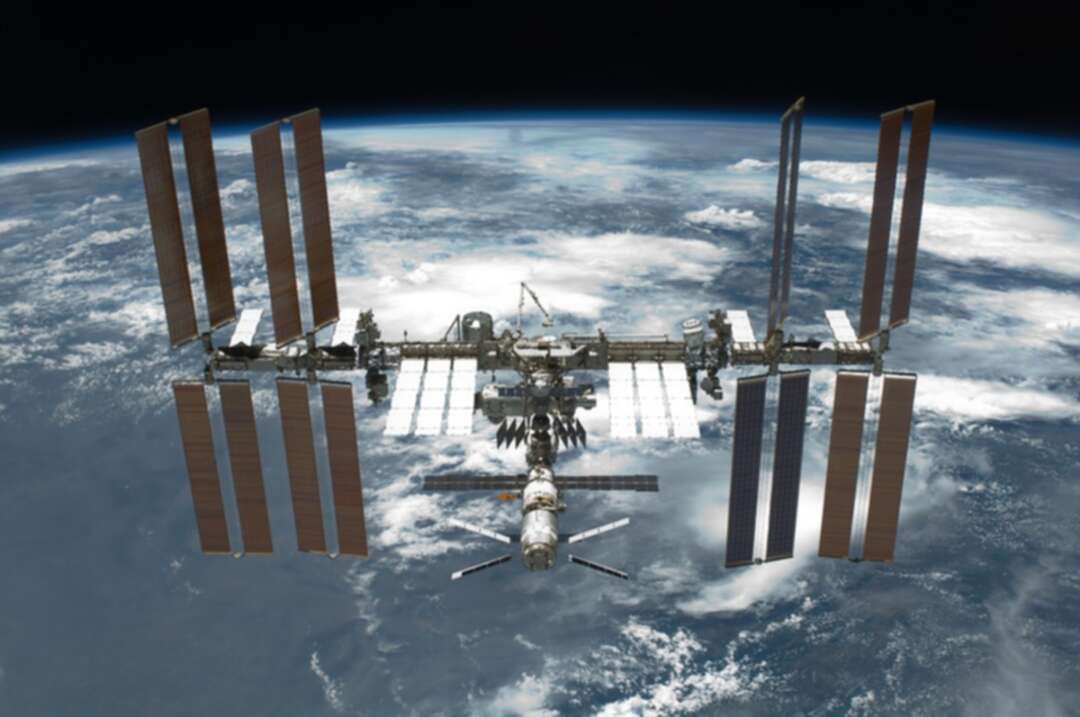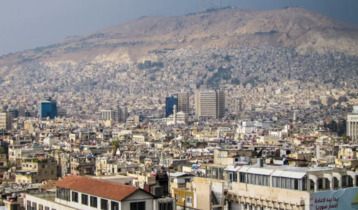-
Webb telescope arrives final cosmic destination to unravel Universe mysteries

The Arab News reported as per the AFP, NASA said Monday, the James Webb Space Telescope has arrived at its cosmic parking spot a million miles away, bringing it a step closer to its mission to unravel the mysteries of the Universe.
At around 2:00 p.m. Eastern Time (1900 GMT), the observatory fired its thrusters for five minutes to reach the so-called second Lagrange point, or L2, where it will have access to nearly half the sky at any given moment.
The report said that tdelicate burn added 3.6 miles per hour (1.6 meters per second) to Webb’s overall speed, just enough to bring it into a “halo” orbit around L2, 1.5 million kilometers from Earth.
NASA Administrator Bill Nelson in a statement: “Webb, welcome home!”
According to the report, Webb will begin its science mission by summer, which includes using its high resolution infrared instruments to peer back in time 13.5 billion years to the first generation of galaxies that formed after the Big Bang.

At L2, it will stay in line with the Earth as it moves around the Sun, allowing Webb’s sunshield to protect its sensitive equipment from heat and light.
For the giant parasol to offer effective protection, it needs the Sun, Earth and Moon to all be in the same direction, with the cold side operating at -370 degrees Fahrenheit (-225 Celsius).
NASA launches James Webb Space Telescope to probe universe origins
The thruster firing, known as an orbital burn, was the third such maneuver since Webb was launched on an Ariane 5 rocket on December 25.
The plan was intentional, because if Webb had gotten too much thrust from the rocket, it wouldn’t be able to turn around to fly back to Earth, as that would expose its optics to the Sun, overheating and destroying them.
It was therefore decided to slightly underburn the rocket firing and use the telescope’s own thrusters to make up the difference.
NASA begins process of bringing newly launched James Webb Space Telescope into focus
The burns went so well that Webb should easily be able to exceed its planned minimum life of five years, Keith Parrish Webb observatory commissioning manager told reporters on a call.
“Around 20 years, we think that’s probably a good ballpark, but we’re trying to refine that,” he said. It’s hypothetically possible, but not anticipated, that a future mission could go there and refuel it.
Webb, which is expected to cost NASA nearly $10 billion, is one of the most expensive scientific platforms ever built, comparable to the Large Hadron Collider at CERN, and its predecessor telescope, Hubble.
Nasa announces two new missions to Venus
But while Hubble orbits the Earth, Webb will orbit in an area of space known as a Lagrange point, where the gravitational pull from the Sun and Earth will be balanced by the centrifugal force of the rotating system.
An object at one of these five points, first theorized by Italian French mathematician Joseph-Louis Lagrange, will remain stable and not fall into the gravity well of the Sun and Earth, requiring only a little fuel for adjustments.
Webb won’t sit precisely at L2, but rather go around it in a “halo” at a distance similar to that between the Earth and Moon, completing a cycle every six months.
This will allow the telescope to remain thermally stable and to generate power from its solar panels.
Elon Musk rejects claims his satellites are taking up too much room in space
Previous missions to L2 include the European Space Agency’s Herschel and Planck observatories, and NASA’s Wilkinson Microwave Anisotropy Probe.
Webb’s position will also allow continuous communications with Earth via the Deep Space Network — three large antennas in Australia, Spain and California.
Earlier this month, NASA completed the process of unfolding Webb’s massive golden mirror that will collect infrared signals from the first stars and galaxies that formed a few hundred million years after the Universe began expanding.
Visible and ultraviolet light emitted by the very first luminous objects has been stretched by the Universe’s expansion, and arrives today in the form of infrared, which Webb is equipped to detect with unprecedented clarity.
China calls on US to protect its space station from satellites
Its mission also includes the study of distant planets, known as exoplanets, to determine their origin, evolution and habitability.
Next steps include aligning the telescope’s optics and calibrating its scientific instruments. It is expected to transmit its first images back in June or July.
Source: arabnews
You May Also Like
Popular Posts
Caricature
BENEFIT Sponsors Gulf Uni...
- April 17, 2025
BENEFIT, the Kingdom’s innovator and leading company in Fintech and electronic financial transactions service, has announced its sponsorship of the “Innovation and Sustainable Technology Solutions Competition (GU - IST Solutions), hosted by Gulf University at its main campus.
This strategic sponsorship reflects BENEFIT’s active role in advancing technological innovation and fostering sustainable solutions to future challenges. It also seeks to empower Bahraini youth by enhancing their skills, capabilities, and competitiveness in innovation and solution development—contributing meaningfully to the broader goals of sustainable development across all sectors.
As part of BENEFIT’s active involvement in the competition, the company has announced that Hanan Abdulla Hasan, Senior Manager of Public Relations and Communication, will serve on the competition’s supervisory committee. Her upcoming participation reflects BENEFIT’s forward-looking commitment to championing academic and professional excellence.
Commenting on the occasion, Hanan Abdulla Hasan, Senior Manager of Public Relations and Communication at BENEFIT, said, “We are privileged to support this pioneering initiative, which aligns seamlessly with BENEFIT’s enduring commitment to fostering innovation and nurturing the potential of Bahrain’s youth. Our participation is rooted in a deep sense of social responsibility and a firm belief in the pivotal role of innovation in shaping a sustainable future. Through such platforms, we seek to empower the next generation with the knowledge, skills, and foresight required to develop impactful solutions that address future challenges, in line with the United Nations Sustainable Development Goals 2030.”
Dr. Aseel Al Ayash Dean of the College of Engineering in Gulf University commented, “We extend our sincere gratitude to BENEFIT for their generous sponsorship and support of the Innovation and Sustainable Technology Solutions Competition. This contribution plays an instrumental role in helping us achieve the strategic goals of this initiative, namely, cultivating a culture of innovation and sustainability, encouraging efforts that address the imperatives of sustainable development, and enhancing the practical and professional capabilities of our students and participants.”
The event will bring together a diverse spectrum of participants, including secondary school students, university undergraduates, engineers, industry professionals, entrepreneurs, academic researchers, and subject matter experts representing a wide range of disciplines.
The competition seeks to inspire participants to develop and present innovative, sustainable technologies aimed at addressing pressing environmental, social, and economic challenges. It encourages the formulation of business models that integrate advanced technological solutions with core principles of sustainability. Moreover, it serves as a platform for emerging leaders, entrepreneurs, and innovators to contribute to the advancement of the Sustainable Development Goals, promote the ethos of responsible technology, and demonstrate its transformative potential across various sectors.
Attendees will have the opportunity to view a series of project presentations submitted by participants, covering diverse areas such as eco-friendly product design, smart and sustainable innovations, renewable energy technologies, water conservation and management, waste minimisation and recycling, green architectural solutions, and sustainable transportation systems. Outstanding projects will be formally recognised and awarded at the conclusion of the event.
opinion
Report
ads
Newsletter
Subscribe to our mailing list to get the new updates!






















